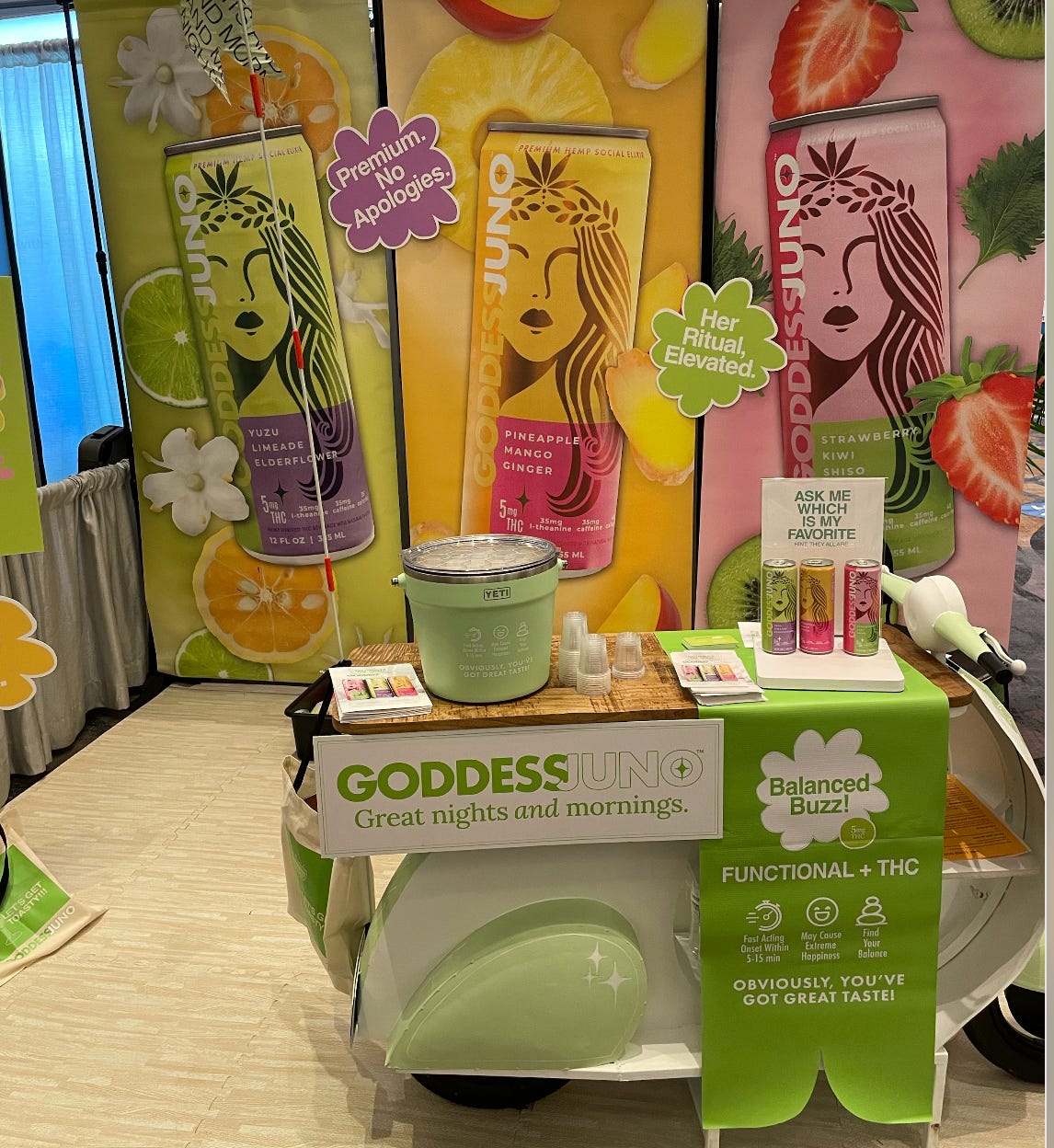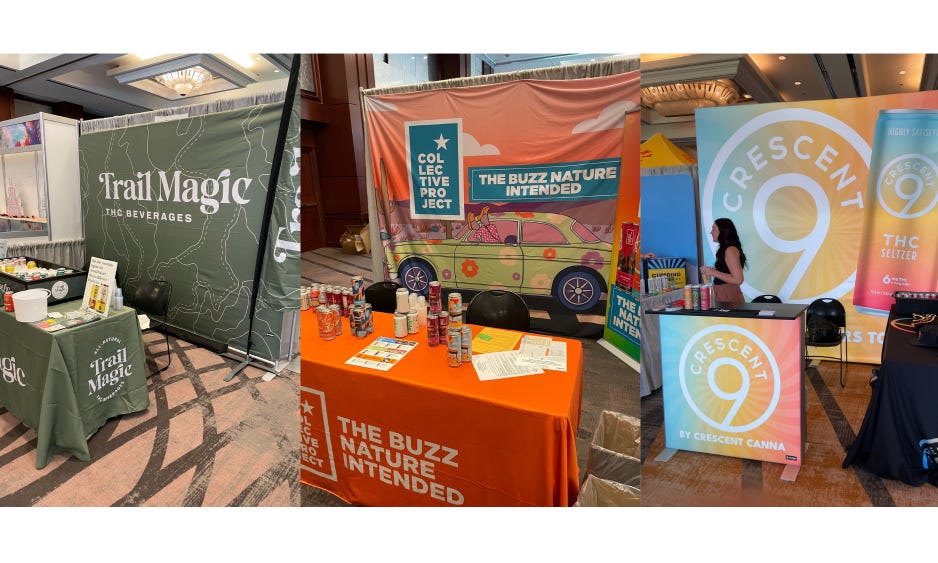There was a quote that stuck with me at the recent 3-day Hemp Beverage Show in Atlanta — it came from R.H. Barringer of Barringer Distributing in North Carolina. This guy has been selling for 40+ years, seen every beverage trend: hard seltzers, cocktails in cans, NA beers, craft beer in cans — all of it.
What he said was this:
“This hemp beverage category is the single biggest disruption I’ve ever seen. Everything else has just been an iteration. This is different.”
That gave me pause. Is he right?
Well, maybe not entirely. If you're just swapping out alcohol for hemp in a beverage, you're still selling liquid. And in a lot of ways, the business works the same. Distributors will distribute. Makers will make. Retailers will retail.
But the consumer? The consumer is reacting differently.
Why Consumers Love These Drinks
The effect is clean, relaxing, uplifting.
No hangover. No belligerence.
They actually like how they feel.
And in beverage, that’s the ultimate metric.
Meanwhile, the industry is slowly waking up. The same people who missed seltzers, missed craft cans, missed NA beer — they’ll likely miss this too. While there were hundreds of brands at the show. Not that many distributors. They are rarely the first to catch a wave
In Search of a THC-Infused NA Beer
Here’s where things get weird.
A bunch of long conversations in Atlanta came back to one regulatory wall: you can’t legally make a THC-infused non-alcoholic beer because of a 1932 statute. Yep. A law written before prohibition even ended, before anyone thought about dealcoholized craft beer, is still dictating what brewers can do.
It’s not that it can’t be done.
It’s not that consumers don’t want it.
It’s just that the TTB won’t approve the label.
That’s the only reason it’s not already everywhere.
(And if I had a slightly looser moral compass, I’d probably skirt the rule and roll the dice. But I’m not to be trusted with those kinds of decisions.). We did however launch a beery, hoppy seltzer to good reviews!
What’s Out There Now?
If you’re into:
Sweet, fruity, bubbly drinks
With sugar or without
In every color and flavor imaginable
…you’re in luck. There’s a forest of these drinks already available.
They're easy to make. Brewing capacity is plentiful. And Canadian and U.S. cannabis companies are jumping in headfirst.
Why? Because the consumer buzz is real — and regulators, as slow as they may be, usually catch up to what the public actually wants.
A Better Buzz, A Better Future?
When you compare these drinks to alcohol, especially on a societal level, it’s not even close to which should be approved for sale to adults. These drinks cause…
Less harm.
Fewer bad outcomes.
And some products — the ones with adaptogens, hemp, and functional herbs — are good for you.
At some point, regulators who resist these drinks start to look like they’re in the pocket of the alcohol or pharma industry.
Because if your job is public health? These products should be a no-brainer.
Redefining the “Social” Drink
These drinks aren’t just replacements for alcohol. They’re opening up new rituals and new social settings:
Health-forward events as parties.
Morning coffee raves.
Libido-boosting yoga mixers.
Game nights, trivia, music — all still better with a buzz, just a different kind.
I even tried a new dealcoholized wine from Silver Hawk. I’m not a wine guy, but it was damn good. Even Jimmy Buffet’s Margaritaville is in on the act…
So, What’s Next?
Common Sense Regulation. We already know how to sell adult-use products. If you can buy alcohol, you should be able to buy these. Period.
But we might need one big change:
No more Three-Tier System.
There are too many brands, too many small accounts, too many enthusiastic consumers — and not enough distributors. The traditional system simply can’t keep up.
Yes, distributors will still play a huge role — they have trucks and routes and relationships. But makers should be able to sell directly to:
Yoga studios
Cigar shops
Co-working spaces
And everywhere in between.
This Is Just the Beginning
Cannabis beverages aren’t just a disruption — they’re going to lead to more innovation in the broader beverage space. We’ll start asking new questions:
What else can we put in a drink?
How else can we feel?
Can beverages support focus, sleep, libido, recovery, calm?
If we follow the consumer — not the outdated regulation — that’s where it’s all heading.
And it’s going to taste great getting there.








